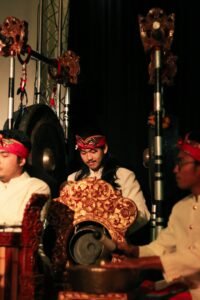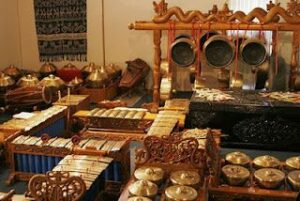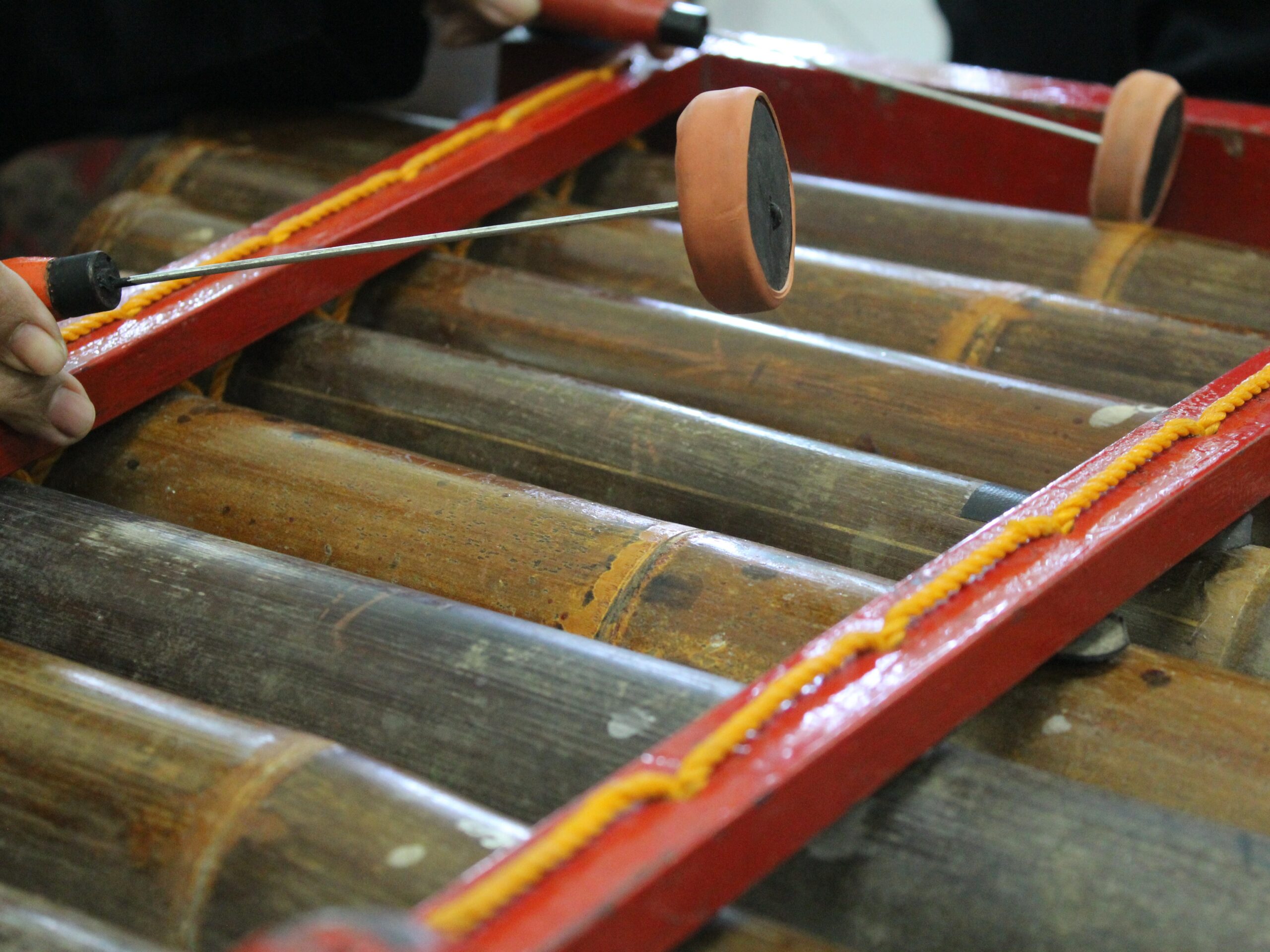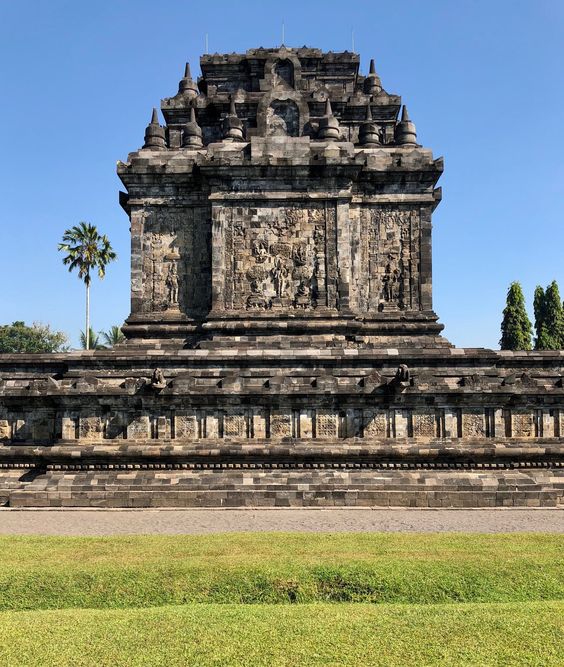Javanese gamelan is one of the most beautiful cultural heritages from Indonesia. This musical instrument, which combines various gongs, metallophones, drums, flutes and various percussion instruments, has been an integral part of Javanese life for centuries. Let’s explore the rich and varied history of Javanese gamelan.
The Origins of Javanese Gamelan
The exact origins of Javanese gamelan are still a mystery. However, it is estimated that gamelan has existed in the Indonesian archipelago for more than 1,000 years. Some theories attribute gamelan to influences from India, China, or even Persia. However, Javanese gamelan has developed into its own unique style.
The Importance of Gamelan in Javanese Culture
Gamelan is not just a musical instrument, but also a symbol of culture and spirituality. Gamelan music is often used in various religious ceremonies, such as wedding ceremonies, wayang kulit performances, and traditional ceremonies. Apart from that, gamelan is also used as a means for meditation and seeking spiritual inspiration.
Obstacles During Colonization
During the Dutch colonial period in Indonesia, Javanese gamelan experienced problems. Some gamelan instruments were even brought to Europe as exotic collectibles. Despite this, the Javanese people still maintain this cultural heritage tenaciously. After Indonesia’s independence, gamelan gained greater recognition as a symbol of national pride.
Various Gamelan Styles
Javanese gamelan has various types and different styles, depending on the region. In Central Java, gamelan often has more and more complex instruments. In East Java, there are lighter variations of gamelan with a strong influence of Arabic music. Each type of gamelan has its own uniqueness and beauty.
Contemporary Developments
Over the past few decades, Javanese gamelan has developed in a variety of interesting directions. Young musicians often try to combine gamelan traditions with modern music genres, creating something unique and fresh. This helps keep the gamelan heritage alive and relevant in modern Indonesian culture.
The Future of Gamelan

Javanese gamelan continues to develop as an inseparable part of Indonesian people’s lives. Music lovers from all over the world are also increasingly interested in learning and playing gamelan. This helps strengthen relations between Indonesia and the international community.
As a symbol of a rich and beautiful cultural heritage, Javanese gamelan continues to be an important part of Indonesia’s cultural identity. Through preserving, understanding and appreciating this music, we can ensure that Javanese gamelan will continue to flow as an enchanting and profound musical genre, celebrating Indonesia’s heritage and rich culture.
The function of Javanese Gamelan is more than just a musical instrument

Javanese gamelan is one of Indonesia’s very rich cultural heritages and has high artistic value. However, gamelan is not just a traditional musical instrument; it is a reflection of Java’s deep history, culture and philosophy. This article will discuss more about the function of Javanese gamelan, how it influences people’s lives, and what makes it so special.
Gamelan as an artistic expression
Gamelan is a traditional Indonesian musical ensemble consisting of various percussion instruments, such as gongs, kendang (drums), saron (xylophone), bonang (metallophone), and various other instruments. Although gamelan exists on various islands in Indonesia, Javanese gamelan is known as one of the most famous.
The main function of the gamelan is as a musical instrument used in various ceremonies and art performances. In Java, gamelan is often used in various cultural contexts, such as wedding ceremonies, wayang kulit performances, and religious ceremonies. Gamelan music has a distinctive feel and can convey various emotions, from joy to longing.
Gamelan as Social Glue
Apart from being an artistic expression, gamelan also functions as a social glue in Javanese society. Playing gamelan often involves collaboration between various instrument players. It teaches the importance of cooperation, harmony, and communication in society. Through the practice of playing gamelan, people can strengthen social relationships and foster a sense of unity.
Gamelan as a Cultural and Historical Lesson

Another function of gamelan is as a tool for cultural and historical education. Playing gamelan is a way of learning about the cultural heritage of our ancestors, as well as respecting inherited traditions and values. Javanese young people are taught the meaning of songs and dances accompanied by gamelan, so they can preserve this tradition for future generations.
Types of Javanese Gamelan
Javanese gamelan is one of the famous traditional music ensembles in Indonesia. This is a collection of percussion instruments that produce beautiful, nuanced sounds. Let’s explore the number and types of Javanese gamelan along with a complete description.
1. Gong Ageng

The Ageng gong is one of the most important components in a Javanese gamelan ensemble. This gong is large in size and produces a distinctive basic sound. It functions as the gamelan’s “leader” and is often used to mark the beginning and end of a musical composition.
2. Kendang
Kendang is a double-sided drum that is usually played with the hands. It is the gamelan’s natural metronome, setting the rhythm and basic patterns for the music. Kendang also has an important role in adding dynamics and expression to gamelan music.
3. Sharon
Saron is a musical instrument similar to a xylophone. It consists of a number of metal blocks placed on top of a resonator. Saron has two types, namely saron demung (larger) and saron barung (smaller), each of which produces a different tone.
4. Bonang
Bonang is a metallophone instrument consisting of a series of small gongs hung in a series. It has two types, bonang barung and bonang panerus, both of which play an important role in producing melodies and tone patterns in gamelan music.
5. Gender
Gender is an instrument similar to the saron, but played using a bat. It is an important instrument in producing melodies in gamelan music.
6. Slenthem
Slenthem is a metalophone instrument that has a long stem. This produces a deep and distinctive sound in a gamelan ensemble. Slenthem is used to create basic tones that support the structure of music.
7. Kenong
Kenong is a small gong that has a similar role to a large kenong. It is used to add nuance and depth to gamelan music.
8. Kenong Gede
Kenong Gede is a large gong that produces a deep and powerful sound. It is used to provide the basis and structure in gamelan music.
These are just a few examples of instruments in Javanese gamelan ensembles. There are many more instruments that form a very rich and beautiful music collection. Each instrument has an important role in creating the deep beauty and uniqueness of Javanese gamelan music.





